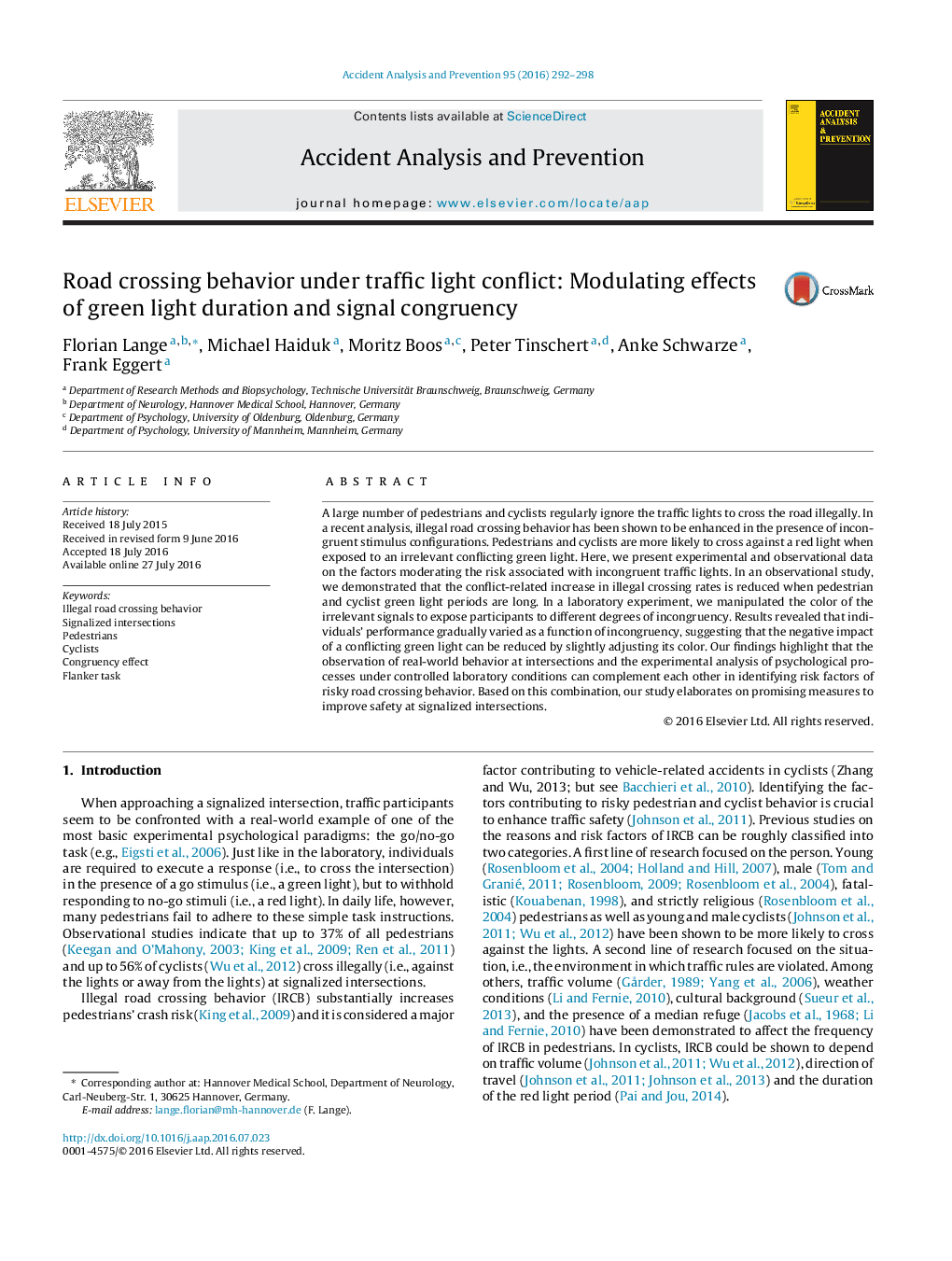| Article ID | Journal | Published Year | Pages | File Type |
|---|---|---|---|---|
| 571937 | Accident Analysis & Prevention | 2016 | 7 Pages |
Abstract
A large number of pedestrians and cyclists regularly ignore the traffic lights to cross the road illegally. In a recent analysis, illegal road crossing behavior has been shown to be enhanced in the presence of incongruent stimulus configurations. Pedestrians and cyclists are more likely to cross against a red light when exposed to an irrelevant conflicting green light. Here, we present experimental and observational data on the factors moderating the risk associated with incongruent traffic lights. In an observational study, we demonstrated that the conflict-related increase in illegal crossing rates is reduced when pedestrian and cyclist green light periods are long. In a laboratory experiment, we manipulated the color of the irrelevant signals to expose participants to different degrees of incongruency. Results revealed that individuals' performance gradually varied as a function of incongruency, suggesting that the negative impact of a conflicting green light can be reduced by slightly adjusting its color. Our findings highlight that the observation of real-world behavior at intersections and the experimental analysis of psychological processes under controlled laboratory conditions can complement each other in identifying risk factors of risky road crossing behavior. Based on this combination, our study elaborates on promising measures to improve safety at signalized intersections.
Related Topics
Physical Sciences and Engineering
Chemical Engineering
Chemical Health and Safety
Authors
Florian Lange, Michael Haiduk, Moritz Boos, Peter Tinschert, Anke Schwarze, Frank Eggert,
